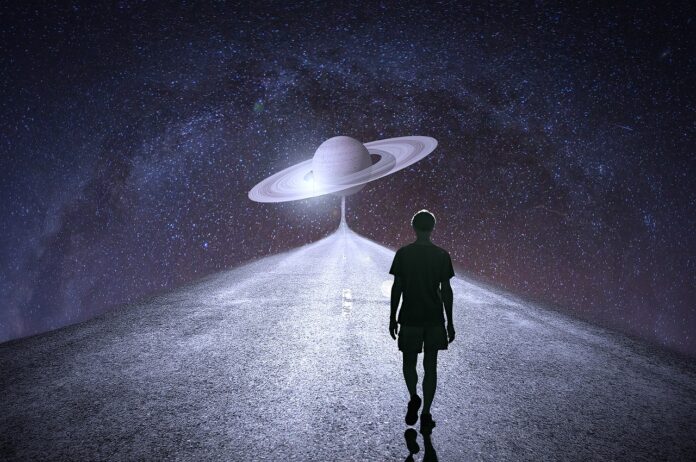Today, we want to present you with some interesting facts about Saturn, the sixth planet from the Sun. It is most famous for its beautiful giant rings. In the Roman Empire, Saturn was known as the god of agriculture, abundance, and wealth. If you enjoy observing the night sky, you should check out these facts about the planet Saturn.
Interesting Facts About Saturn
- The surface of Saturn can experience severe storms and some of the fastest winds in the Solar System, reaching speeds of up to 1800 km/h.
- Titan, Saturn’s largest moon, is fifty percent larger and eighty percent more massive than our Moon, making it the second-largest natural satellite in the Solar System after Ganymede, Jupiter’s moon. Its diameter is only slightly smaller than Jupiter, but it is much less massive.
- Rivers, lakes, and oceans have been found on Titan. Due to the extremely low temperatures, the water on Titan is actually a mixture of liquefied methane, ethane, ammonia, and other gases.
- Saturn is primarily composed of hydrogen with a small amount of helium.
- Another interesting fact about Saturn is its strong magnetic field, which extends about a million kilometers.
- Hexagonal clouds on Saturn’s north pole have existed for at least several decades. The appearance of these hexagonal clouds remains a mystery.
- Enceladus, one of Saturn’s moons, is considered one of the most promising places in our system for searching for extraterrestrial life because it likely has a subsurface ocean of water.
- The width of Saturn’s rings ranges from 7,000 to 80,000 kilometers, but their thickness is minimal. The thickest ring is up to 1 km thick, while the thinnest rings are no more than 10-12 meters thick.
- The origin of Saturn’s rings is still debated. One theory suggests they formed along with the planet.
- Another interesting fact about Saturn is that artificial spacecraft have visited Saturn’s vicinity only four times.
- Since Saturn can be seen with the naked eye, people have known about its existence since ancient times. Galileo was the first to notice something around Saturn, but he did not recognize them as rings.
- The first spacecraft to visit Saturn and take close-up pictures was Pioneer 11 in 1979.
- Approximately every 29.5 years, Saturn experiences a massive storm known as the “Great White Spot.” The last observation was in 2010, and the next one is expected in 2040.
- Saturn takes 29.4 Earth years to orbit the Sun (also see interesting facts about the Sun).
- Saturn is the least dense planet in the Solar System. The equatorial diameter is 120,000 kilometers, which is 10,000 kilometers more than the polar diameter. It is the only planet less dense than water, meaning it would actually float on the surface of water rather than sink.
- Saturn’s rings are not solid but consist of billions of pieces of rock and ice orbiting the planet.
